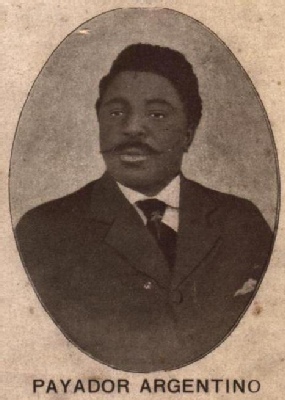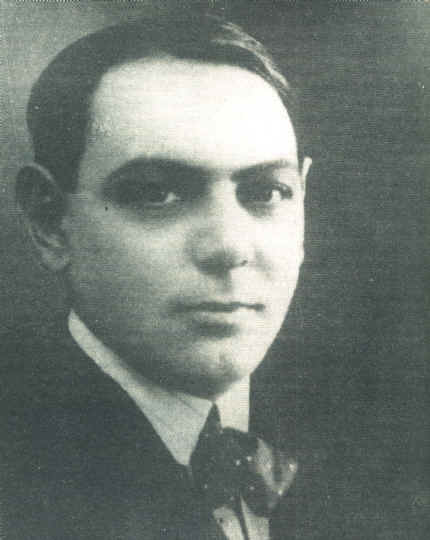<Back to Index>
- Composer Higinio D. Cazón, 1866
- Composer and Musician Vicente Greco, 1886
PAGE SPONSOR

Higinio D. Cazón (1866 - 1914) was a musician and songwriter.
His minstrel activity led him to many parts of the Republic, but the preferred center of their performances was in Buenos Aires and
the people of this province. He published a booklet called joy and
sorrow, which included his composition Ombú Under Generous, which
gave him great satisfaction as a poet. On June 30, 1896, got into a
contrapuntal payada with Gabino Ezeiza.
The place of the meeting was the Doria theater stage, in Buenos Aires. A
little later, along with other minstrels, performed at the same stage,
to the benefit of the widow and children of the poet and
troubadour Paul J. López. An honest and sincere man, he managed
to form
strong friendships with other minstrels of his time and the result was a
group formed with Madariaga and Villoldo (author of the unforgettable
tango
The brunette), acting in the theater company headed by Herminia Mancini.
He died suddenly in Balcarce, Buenos Aires,
during a tour in 1914. His memory has survived in several contemporary
compositions dedicated to him or evoked in tango lyrics, as did Catullus
Castillo, in Café de los Angelitos.

Vicente Greco (February 3, 1888 – October 5, 1924) was an Argentinian composer, conductor, and bandoneon player of tango music. He had a significant role in the spread of tango music from the suburbs into the cities, where it became very popular.
Born in Buenos Aires, he was a son of Genaro Greco and Victoria Santo, a couple of modest means who brought up Vicente and seven other children. The small family income caused Vicente to work at a young age; his schooling was interrupted, and he instead became a newspaper hawker, shouting out headlines to sell newspapers in the streets. Several of his siblings were also musically inclined. Vicente's musical career began around 1903 during his teens, when he played guitar complemented by singing, for fun.
Greco learned to play a concertina that had been given as a gift to his parents, and then his parents gave the 14 year old prodigy a bandoneon as a gift. The first tango he played was "La Tirana", and he initially worked in bars and lounges that were popular in the neighborhood of La Boca, one of the main neighborhoods of immigrants in Buenos Aires. He debuted in San Pedro, San Nicolás, Baradero, Rosario, and elsewhere.
In San Pedro, he got to know and play music with leading performers of that era, including Prudencio Aragón (El Johnny), Ernesto Zambonini (El Rengo), Lorenzo (El Negro) and Juan Borguessi (El Taruguito). But in San Pedro he also had a serious accident due to a stage collapse, and this may have contributed to his early death.
Greco obtained a harmonium
that he used for practice and for composing. He had dark eyes, and was
short, with a tendency toward frequent good humor. He led the first
group known as an orquesta típica, which means an orchestra specializing in tango, and that group was called Orquesta Típica Criolla.
As a self taught musician, he initially needed the help of fellow musicians to commit his music to paper. Among the venues where Greco played was the Rodríguez Peña Saloon, in which, one evening in 1911, the tango "Rodríguez Peña" was premiered with a very warm reception by the audience, who followed their applause by carrying him on their shoulders victoriously along the street outside. Also in 1911, he was the first tango musician to be hired at the Armenonville, a musical cabaret that became one of the main centers of diffusion of the tango.
His tangos sold well; 22,000 copies of his first tango "El morochito" (written in 1905) were sold, "Rodríguez Peña" sold 12,000 copies, and "El flete" sold 6,000 copies in three months. Numbers such as "Rodríguez Peña", "La viruta" or "El flete", were classics of the genre. The famous singer Carlos Gardel was his personal friend and a musical collaborator.
Greco's recording work began around 1910. He was accompanied by the same instrumentalists with whom he had already appeared at the Café El Estribo: Lorenzo Labissier (bandoneon), Domingo Greco (piano), Vicente Pecci (El Tano) (flute) and Palito Abatte or, on occasions, Francisco Canaro (violin).